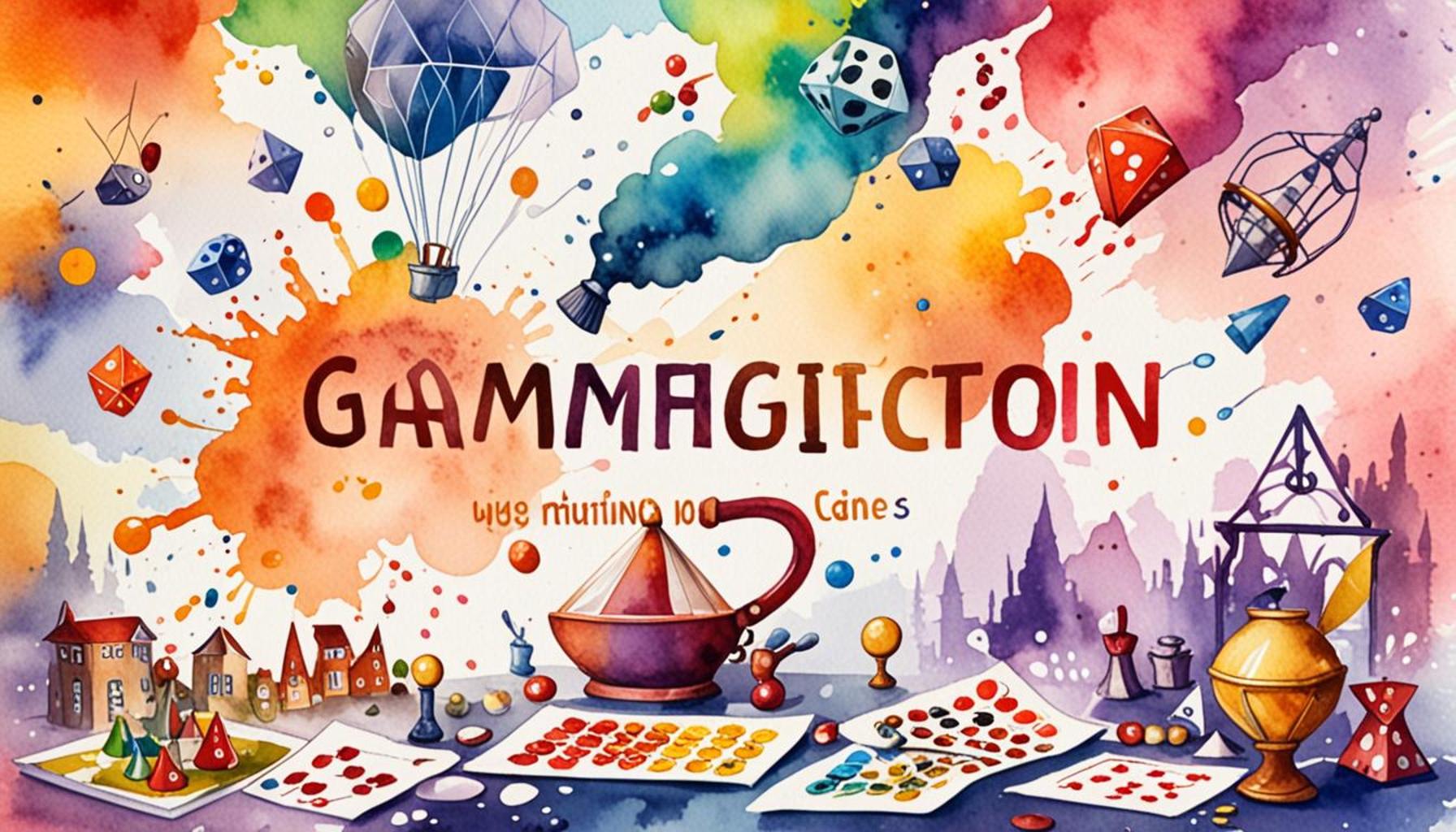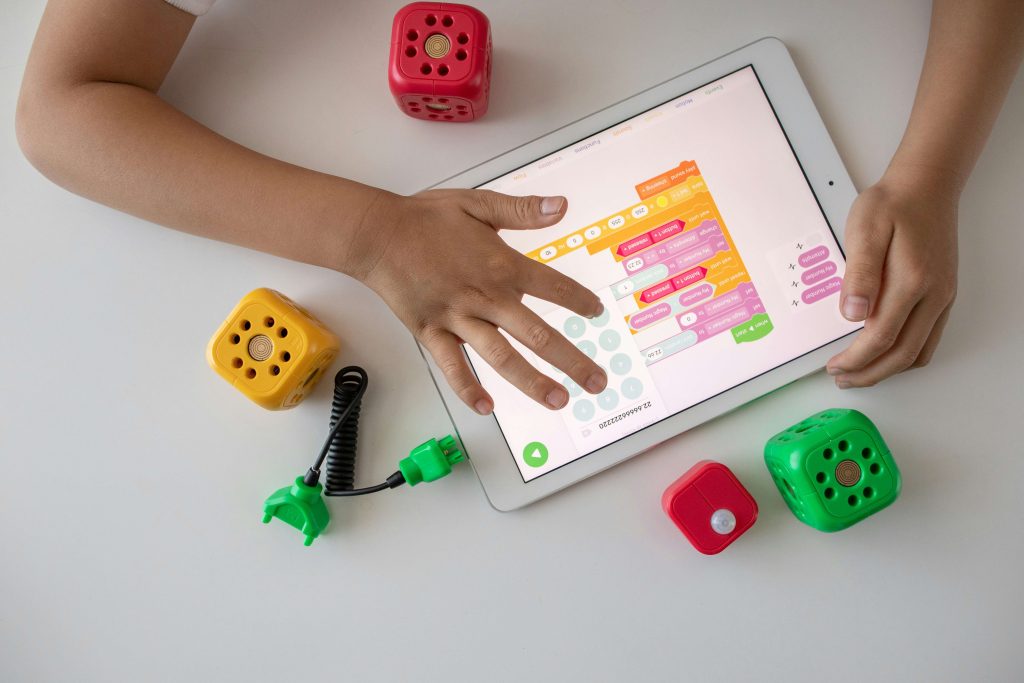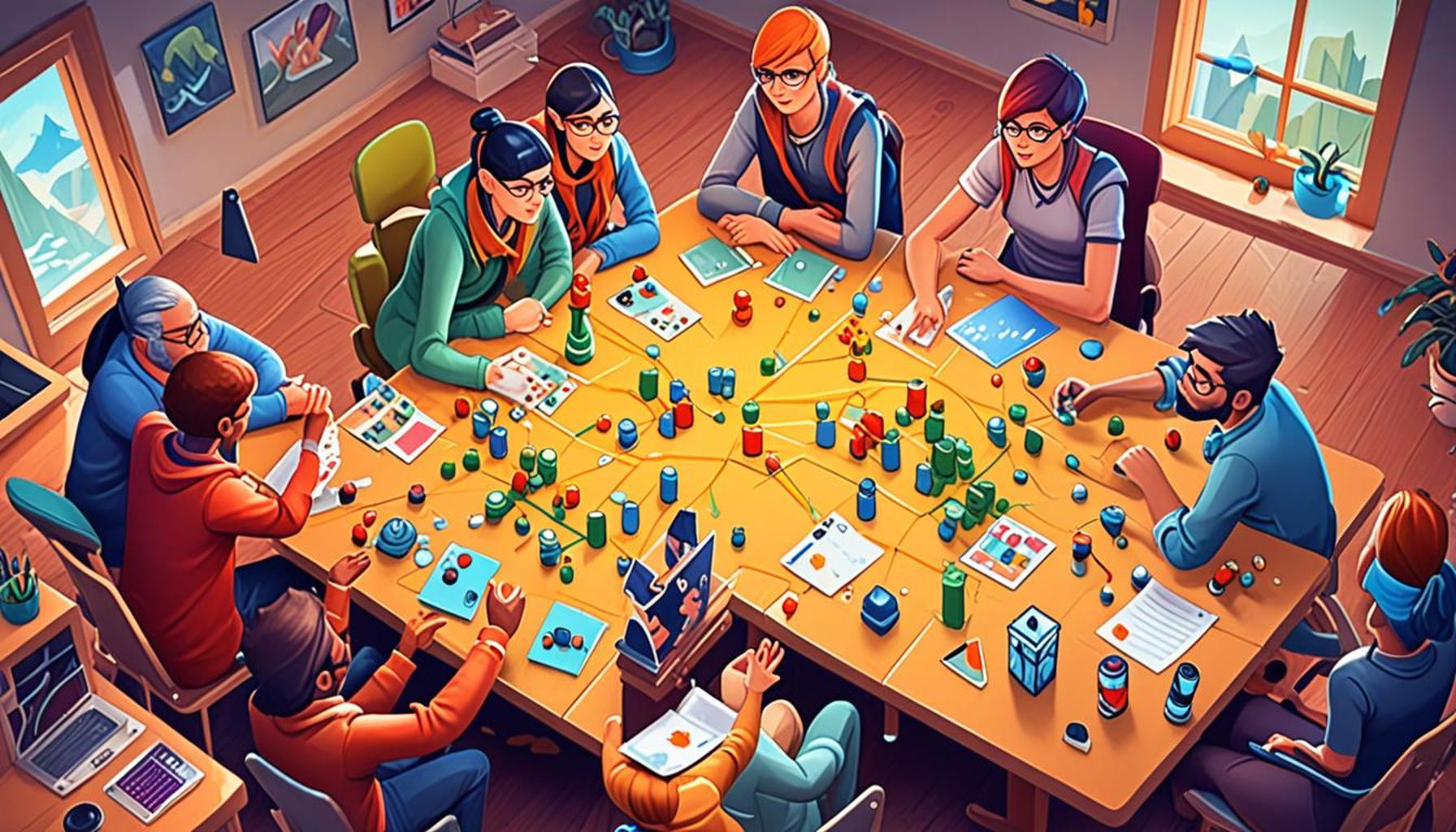Gamification in Learning: Using Strategy Games to Develop Leadership Skills

Understanding Gamification in Leadership Development
In today’s fast-moving educational landscape, traditional learning has often been critiqued for its inefficacy in preparing students for real-world challenges. Enter gamification, a captivating solution that transforms learning into an immersive experience. By incorporating elements from strategy games—such as point scoring, leaderboards, and team collaborations—educators are finding new avenues to nurture essential leadership skills among students. This not only makes learning engaging but also equips learners with competencies in critical thinking, teamwork, and decision-making.
The positive impacts of this approach are manifold. Consider the insights below:
- Engagement: Strategy games, with their interactive and competitive elements, naturally capture attention. For instance, a classroom that integrates games like “SimCity” allows students to build cities while facing challenges that require them to think strategically and manage resources effectively.
- Skill Development: Players hone vital skills through practice. As students work in teams to strategize in games like “Settlers of Catan,” they develop not only tactical thinking but also effective communication and conflict resolution skills.
- Real-World Application: The challenges presented in games often mirror those in corporate environments. For example, simulations used in business courses can teach negotiation skills, preparing learners for future leadership roles.
Research lends further credence to this approach, indicating that the integration of game mechanics into educational frameworks can significantly enhance both retention rates and student satisfaction. A study by the University of Colorado Boulder found that students who engaged in gamified learning experiences scored higher on retention tests compared to those in traditional settings.
As educational institutions across the United States begin to adopt these innovative techniques, they create conducive environments where learning aligns with play. Initiatives like the Kahoot! quiz platform are popping up in classrooms nationwide, enabling teachers to gamify assessments and foster friendly competition among students.
Exploring the principles of gamification further reveals various strategies that can maximize leadership development. From collaborative challenges that promote teamwork to competitive simulations that encourage risk-taking, the potential benefits of this approach are exciting and expansive. In an era where effective leadership is crucial, leveraging the power of strategy games in educational contexts stands out as a compelling method to prepare the next generation of leaders.

DISCOVER MORE: Click here to dive deeper
The Mechanics of Gamification in Leadership Training
To fully grasp the potential of gamification in learning, it is essential to understand how it leverages game mechanics to foster leadership skills effectively. The principles of gamification, when applied to educational settings, create a dynamic environment where learning becomes synonymous with entertainment. This transformation is facilitated through the following key elements:
- Goal Setting: Much like in strategy games, where players have clear objectives to achieve, educational gamification incorporates well-defined learning goals. These goals drive students to pursue excellence, promoting a mindset that is crucial in leadership roles.
- Progress Tracking: One of the pillars of effective gamification is the ability to monitor progress. Students receiving instant feedback in real-time through leaderboards or point systems experience a continuous sense of achievement, which boosts motivation and encourages further engagement.
- Challenge and Competition: Incorporating challenges that require strategic thinking fosters both individual accomplishment and team collaboration. Competitive elements encourage learners to work together, mirroring the dynamics of a corporate team striving for success.
- Storytelling: Strategy games often immerse players in elaborate narratives that necessitate strategic decision-making. By applying storytelling techniques in educational contexts, instructors can create a rich context around leadership challenges that prompt students to think critically about their decisions.
The multicultural adaptation of these mechanics is vital for ensuring that all students resonate with the gamified approach, regardless of their backgrounds. In states like California, where diversity is a hallmark of the classroom experience, combining gamification with culturally relevant content can bridge gaps in understanding and foster an inclusive learning environment.
One standout example of gamification’s efficacy in leadership training can be drawn from the Leader’s Quest program, which immerses participants in problem-solving scenarios that require quick thinking and collaborative decisions. By simulating real-world challenges that leaders face, the program not only enhances critical thinking skills but also nurtures emotional intelligence, a core component of effective leadership.
Moreover, the flexibility of strategy games allows educators to tailor experiences that reflect current business trends and leadership challenges, offering learners valuable skills applicable in today’s hyper-competitive landscape. By integrating popular strategy games like Age of Empires or XCOM, learners can simulate situations that demand risk assessment, resource management, and strategic foresight—qualities imperative for successful leadership.
The blend of entertainment and education through gamified approaches ensures that today’s learners are not just passive recipients of information but active participants in their learning journeys. This shift towards engagement is crucial as it ignites passion and dedication among students, driving them closer to becoming the visionaries and leaders of tomorrow.
In summary, as the educational landscape continues to evolve, the integration of strategy games into learning frameworks represents a powerful strategy to develop essential leadership skills. As the understanding of these mechanisms deepens, educators are poised to create environments that nurture the next generation of influential leaders.
| Advantage | Description |
|---|---|
| Enhanced Engagement | Gamification increases student motivation through interactive challenges and rewards, making learning more appealing. |
| Development of Critical Skills | Strategy games sharpen problem-solving, decision-making, and leadership capabilities, which are vital in today’s fast-paced environments. |
The integration of gaming mechanics into educational frameworks provides a multi-dimensional approach to learning. For instance, games present scenarios that require students to work under pressure, fostering resilience and adaptability. These crucial characteristics allow students to transition smoothly into leadership roles.Furthermore, strategy games simulate real-world challenges and dynamic environments, encouraging players to experiment with various tactics. Such immersive experiences not only enhance learning retention but also encourage collaboration among learners, enhancing their interpersonal skills which are important for effective leadership.As we delve deeper into the realms of gamification in learning, it is crucial to explore new methodologies and their potential impact on leadership development in educational institutions and beyond. Each game designed with educational intent can thus become a powerful tool capable of molding the leaders of tomorrow.
DISCOVER MORE: Click here to learn about the impact of color and design
Engagement and Collaboration: The Power of Team-Based Learning
One of the most significant advantages of integrating gamification in leadership training is the emphasis on engagement and collaboration among learners. Strategy games inherently require players to interact, negotiate, and strategize with one another, fostering an environment of teamwork that mirrors real-world leadership dynamics. This collaborative aspect is crucial, as effective leaders must not only possess individual skills but also the ability to harness group strengths to achieve common goals.
Consider a gamified classroom where participants are divided into teams, each tasked with completing a similar leadership challenge imposed by a strategy game. Facilitators could use games like Settlers of Catan to teach resource management and negotiation skills. This game, rooted in competition for territory and the trade of resources, showcases how leaders must not only consider their own strategies but also anticipate and react to the decisions of their peers. By testing their negotiation skills in a controlled setting, learners can develop confidence in their ability to influence and lead a team under pressure.
Data from recent studies reinforces that learners who engage in team-based games report higher levels of motivation and retention compared to traditional teaching methods. Specifically, according to a 2022 survey by the Education Development Center, 75% of educators observed increased student participation and a 60% improvement in problem-solving skills when using gamified approaches. These statistics are particularly relevant for modern education systems, which strive to prepare learners for complex, multifaceted work environments.
Real-World Applications and Case Studies
Examining the real-world applications of gamification demonstrates its potential beyond theoretical knowledge. Some organizations, such as GE and Accenture, have incorporated strategy games into their training programs for emerging leaders. For instance, GE developed a gamified leadership development initiative that utilized simulations based on challenges the company faced. Participants were placed in competitive scenarios requiring them to make quick decisions, where success depended largely on both their individual abilities and their capacity to work within a team. The outcomes include a measurable increase in organizational productivity and the identification of promising future leaders.
Furthermore, in a notable case study, a university in Texas replaced its traditional leadership seminars with a simulated strategy game called Venture Valley. This interactive platform tasked students with running a virtual startup, necessitating resource allocation, team management, and strategic foresight. Feedback collected from participants indicated substantial gains in their understanding of leadership principles and enhanced ability to adapt to unforeseen challenges—two vital attributes in effective leadership.
- Emotional Intelligence Development: Strategy games often present emotional quandaries, forcing players to navigate interpersonal relationships. This simulates the emotional landscapes leaders must traverse, cultivating a necessary skill set in emotional intelligence.
- Innovation and Creativity: Through creative problem-solving, strategy games encourage learners to think outside the box. Leaders must regularly innovate to overcome obstacles, making this an essential competency in the fast-paced corporate world.
As educational institutions and organizations move forward, they are increasingly recognizing the value of strategy games in developing leadership skills. The fusion of engaging game mechanics with real-world challenges provides a novel approach to fostering vital abilities in future leaders—one that traditional education models are struggling to replicate. In a world where adaptability and foresight are crucial, gamification paves the way for building robust leaders who are ready to navigate the complexities of tomorrow’s organizational landscapes.
DON’T MISS: Click here to discover more about stress-reducing strategies
Conclusion: Paving the Way for Future Leaders
As we delve into the transformative potential of gamification in learning, it becomes evident that strategy games offer a dynamic platform for cultivating essential leadership skills. By engaging learners in rich, interactive environments, these games foster collaboration, critical thinking, and emotional intelligence—attributes that are paramount in today’s fast-paced organizational settings. The real-world applications highlighted by forward-thinking companies like GE and Accenture exemplify the practical benefits of adopting gamified approaches, resulting in enhanced participant engagement and improved decision-making capabilities.
Moreover, data illustrating the success of these strategies underscores their effectiveness: heightened motivation, increased participation, and superior problem-solving skills among learners are just a few of the notable outcomes. As this approach becomes more mainstream, educational institutions and corporate training departments alike are urged to consider the powerful implications of integrating game mechanics into their curricula. Imagine a future where leadership development is synonymous with engaging and interactive learning experiences that prepare leaders not just to react but to innovate and inspire.
In conclusion, gamification stands at the intersection of education and entertainment, offering a fresh perspective on leadership training. By embracing this innovative methodology, organizations can cultivate a new generation of leaders equipped with the skills necessary to tackle the complexities of modern business landscapes. As we continue to explore the vast potential of strategy games in learning, one thing is clear: the future of leadership development is not only serious—it’s playfully strategic.


